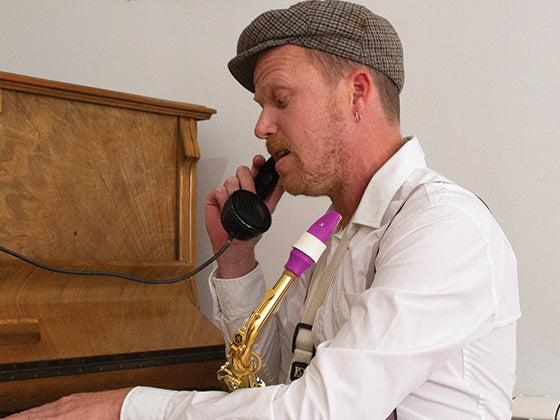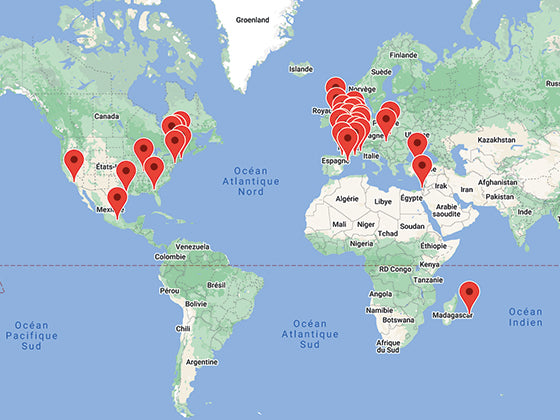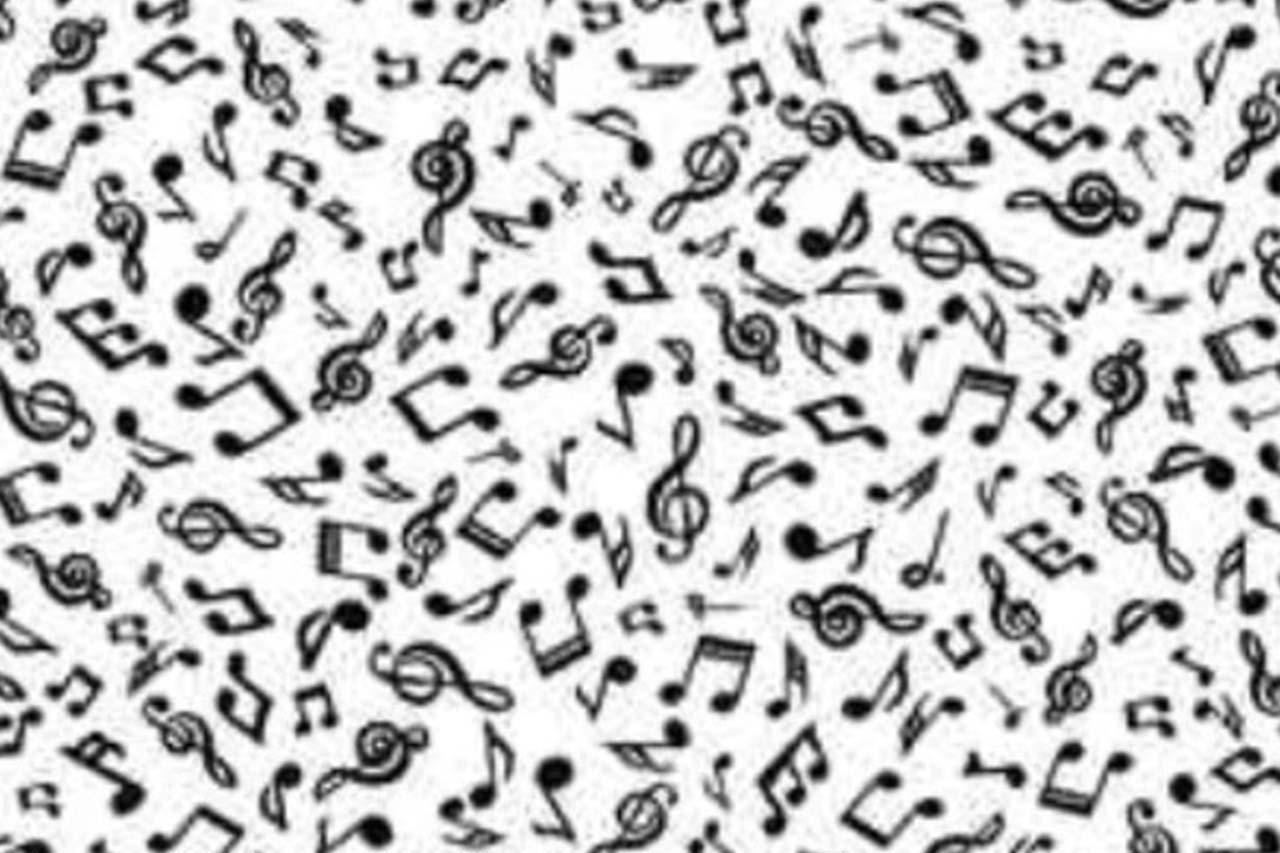This article is the second part of a series dedicated to the use of pentatonic scales in jazz improvisation. In the first article we talked about improvising over a chord derived from natural major scale harmony using the pentatonic major scale that begins on the Vth degree of the associated major scale. If you didn't read the first part, now is the time:
Pentatonic scales in jazz improvisation: part 1
Reminder: The melodic minor scale
One of the most used scales in jazz improvisation is the melodic minor scale. Here it is, the C melodic minor scale:

Just as with major scales: we can associate seven modes to melodic minor scales, the most popular in jazz are:
- The first mode: ionian♭3, which can be used over minor tonic chords (minor-major)
- The fourth mode: lydian♭7 or dominant lydian, which is used over dominant chords with a #11
- The sixth mode : locrian♮2 which can be used over half-diminished chords
- The seventh mode : locrian♭4 or altered scale, which is used over dominant chords
Pentatonic scales and melodic minor scales
As mentionned in the previous article (part 1), there are 3 different pentatonic scales that are included in major scales, beginning on the Ist, the IVth and the Vth degrees of the scale. But what about the melodic minor scale?
It's even easier! The melodic minor scale only has one pentatonic scale, beginning on the IVth degree. In our example, for C minor melodic, it's F pentatonic:

It contains the tonic, the second (or ninth), the fourth, the fifth and the sixth (or thirteenth) of the scale. The following picture shows you the notes of F penta in C melodic minor scale:

Using pentatonic scales over melodic minor harmony
In the previous article, we learnt how to use pentatonic scales over major scale harmony and this can be adapted to melodic minor scale harmony. This time it's easier as there's only one pentatonic per scale, the one beginning on the IVth degree:
For any chord derived from melodic minor scale harmony, we can improvise on the pentatonic scale beginning on the IVth degree of this associated major scale.
- D minor melodic scale => G pentatonic
- G flat minor melodic scale => C flat (or B) pentatonic
- B minor melodic scale => E pentatonic
Applying the rule: minor tonic chords
In jazz tunes, we sometimes come across minor tonic chords. Warning: all minor chords aren't tonic chords (for example subdominant chords are often minor 7th chords). Over minor tonic chords, we can use the 1st mode of the melodic minor scale. We often refer to this chord as a minor-major" chord because it contains both a minor third and a major seventh. When it comes to the relative pentatonic, according to our rule, we can use the pentatonic beginning on the IVth degree of the associated melodic minor scale. So over an A minor-major chord, we can play D pentatonic:

This pentatonic scale is made up of the fourth, the fifth, the sixth, the root and the ninth of the chord! If you mulled over pentatonic scales after reading the first article, you may have noticed that over a minor subdominant chord, such as Am7 the rule explained in the first article also leads us to D pentatonic (the Vth degree of G major scale). So generally speaking, it's easy to find the appropriate pentatonic scale for minor chords. Only Aeolian minor chords have a different associated pentatonic scale (which is... G of course).
Applying the rule: dominant chords
Now, we come to the most interesting use of pentatonic scales. Over dominant chords (where tension is highest), there are many different approaches in terms of improvisation. Using pentatonic scales is one. In jazz, some modes are often used over V chords. Using the example of G7, let's apply the rules we've learnt to find the pentatonic scales we could use.
Non altered V chords
The simplest, and least tense, mode is the mixolydian mode. It corresponds to the fifth mode of the natural major scale, which we explained in the previous article, therefore over G7 we can improvise using G pentatonic. We are in C major and G is the fifth of C, so the rule leads us to G pentatonic.

V#11 chords
It's quite common to include the #11 (or #4) in dominant chords. I always think of the second and fourth bars of the tune "You don't know what love is" where you can hear this particular color. It corresponds to the famous lydian♭7 or dominant lydian (sometimes called mixolydian #11), which is the fourth mode of melodic minor chord. In our example, G7#11 is associated with D minor melodic scale, so our rule says G pentatonic (G is the fourth of D).

It's still the G pentatonic scale. So in our pentatonic system, it means that we can't really differentiate the dominant lydian color from the mixolydian since we are playing the same pentatonic scale. It's a bit sad if you like the dominant lydian mode! But the good news is that we can play the same pentatonic (and it will sound good) whilst the harmonic section (pianist, guitarist...) plays G7#11 or straight G7 mixolydian in their voicings.
"Altered" V chords
Here we have one of the most interesting pentatonic scales to play over a dominant chord. When we want to fully express the altered colour, maximising the tension over the chord, we often play the famous "altered scale" (which corresponds to the locrian♭4 mode). It's then a feast of all the alterations: the ♭9th, ♭13th, #9 and #11 are gathered in a nearly mystical tension. It corresponds to the seventh mode of the minor melodic scale. In our example G7alt will therefore be associated to A flat minor melodic scale. Our rule says to play the pentatonic beginning of the fourth degree of the scale, that is D flat:

D flat is the tritone of G so for a little mental shortcut, I call it the pentatonic of the tritone. What is really awesome with this pentatonic scale is that it contains all the interesting alterations from the altered mode, so we can play it and have quite an "out" sound, while avoiding the trap of chromatism. Try it over different dominant chords to understand how it sounds.
The Vsus4♭9 chords
There is one last pentatonic scale I want to talk about, the one we can use on a Xsus4♭9 dominant chord. This is a really nice color, associated with the phrygian♮6 mode, which is the second mode of minor melodic scale. In our example, it's like playing F melodic minor scale over a G chord (like an Fm/G). In this case, we can play the pentatonic scale beginning on the fourth of the scale, in our case B♭ (the fourth of F).

It's interesting to see that the pentatonic scale doesn't include the flat ninth. It contains the sharp ninth and also the fourth! So be careful with the other musicians (especially pianists/guitarists), the best would be for them to really emphasise the sus4♭9 color. Over a very standard voicing for G7 (for example just third and seventh), there can be a small dissonance between the B and the C. It's not "forbidden" but it's good to know (don't play a strongly sustained C, please...).
I really like this pentatonic scale, but I play the piano (nobody is perfect...) so I'm lucky to have the complete control of the harmony, I can adapt the voicing under the pentatonic. Easy! If you have any doubts, talk with your musicians.
And the V13♭9 chords?
The bebop players among us are already wondering... and the Vb9 chords? If you like the colour of the duo flat ninth/perfect thirteenth, I'm sorry, you won't find a pentatonic that works. In this case the best is to stick to the half-whole diminished scale, which does not contain a pentatonic. Maybe I'll write an article on it someday!
Case study: playing pentatonic scales over a whole tune
After the theory, let's get down to practising. Let's take a tune and see what kind of pentatonic scales we can play over all the chords. I advise you take jazz standards and do the same exercise and playing only pentatonic scales over every chord. You will have a better understanding of how they sound.
Let's take the first half of the tune"There will never be another you" written for B flat instruments such as tenor and soprano sax.

Analysis of the tune
Let's do a quick analysis of those sixteen bars. The tune is in F major tonality. It modulates to C major then to B flat major, goes back (very quickly) to F major, then to C major for the last line, and finally goes back to F major. There are three tonalities, so with everthing we have learnt, we can expect to play at least the three pentatonic scales associated with these tonalities:
- C pentatonic for F major
- G pentatonic for C major
- F pentatonic for B♭ major
Line by line analysis
My idea here (and there are plenty other options) is to play dominant chords in this tune as altered chords.

On the E half-diminished chord, we can play a natural F or an F sharp. It corresponds to the locrian mode (seventh mode of natural major scale) or locrian♮2 (sixth mode of altered scale). So in the case of E half-diminished, it corresponds to either F major scale or to G minor melodic scale. Either way, our rules lead to the same pentatonic (C pentatonic): how convenient!

In my example the F13 chord is expressed as an altered chord (for the chorus only), like the A7 chord in the previous line. We can use the pentatonic of the tritone. We can play B pentatonic over an F7 chord: so much tension!

The E flat (#11) chord is a lydian chord, it's the IVth degree of B flat Major, the tonality that we landed on the previous bar. So, relax and keep playing F pentatonic.

In the last line, we go back to C major tonality. We can play the G7 chord as altered (just as in line 2) but in the melody, the chord is mixolydian, non altered. We could stay on this colour however, I then chose to alter the chord in the second bar to add some tension. Plus it creates some very nice parrallel movement between D flat pentatonic and C pentatonic.
Try it!
Try to use a play-along and play this tune (and others) using only pentatonic scales. The effect is very interesting and creates a more spacious feel. And once you know all 12 pentatonics and you know which chords to play them over, you can improvise with any tune. Be careful though, don't overdo it! If you play pentatonics everywhere, every single time, it will probably become a bit boring. But it's a very nice addition to your vocabulary!
How to practice your pentatonics
It's the topic of the next article! In the meantime, play pentatonic scales!













